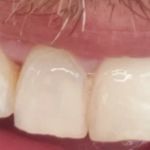Understanding Gum Recession: Causes, Symptoms, and Prevention
- 1. What is Gum Recession?
- 2. Causes of Gum Recession
- 3. Symptoms of Gum Recession
- 4. Preventing Gum Recession: Essential Tips
- 5. Treatment Options for Gum Recession
1. What is Gum Recession?
Gum recession occurs when the gum tissue surrounding the teeth pulls back, exposing more of the tooth or even the tooth's root. Over time, this can lead to tooth sensitivity, increased risk of cavities, and potential tooth loss. Gum recession is a common issue, especially as we age, but it can affect people of all ages. It's important to recognize the signs early on and take preventative measures to maintain healthy gums.
2. Causes of Gum Recession
Gum recession can be caused by a variety of factors, many of which are linked to poor oral hygiene or external factors:
- Poor Oral Hygiene: Inadequate brushing and flossing lead to plaque buildup, which can cause gum disease and recession.
- Genetics: Some people are more genetically predisposed to gum recession, even with good oral care practices.
- Brushing Too Hard: Brushing with excessive force or using a hard-bristled toothbrush can wear down gums and lead to recession.
- Smoking: Tobacco use is a significant risk factor for gum disease, which can contribute to recession.
- Hormonal Changes: Conditions like pregnancy, menopause, and puberty can increase susceptibility to gum recession due to hormonal shifts.
- Misaligned Teeth: Crooked teeth or an improper bite can place additional stress on the gums, leading to recession.
3. Symptoms of Gum Recession
Identifying the symptoms of gum recession is key to preventing further damage. Here are some common signs:
- Tooth Sensitivity: A common symptom of gum recession is increased tooth sensitivity, especially to hot, cold, or sweet foods.
- Longer Appearing Teeth: As the gums recede, teeth may appear longer, giving a "stretched" look.
- Visible Gaps: Receding gums can create visible gaps between the teeth and gums.
- Bleeding Gums: If gums become inflamed due to recession, they may bleed, especially when brushing or flossing.
If you notice any of these symptoms, it’s essential to visit a dentist for an evaluation and start treatment as soon as possible.
4. Preventing Gum Recession: Essential Tips
Prevention is the best way to protect your gums from recession. Here are some crucial tips to maintain gum health:
- Brush Gently: Use a soft-bristled toothbrush and brush your teeth with gentle, circular motions. Avoid brushing aggressively.
- Floss Daily: Flossing helps remove plaque between teeth that your toothbrush can't reach, reducing the risk of gum disease.
- Avoid Tobacco: Smoking weakens the gums and makes them more susceptible to recession. Quitting can significantly improve gum health.
- Maintain a Healthy Diet: A balanced diet rich in vitamins and minerals supports healthy gums and teeth.
- Visit Your Dentist Regularly: Professional cleanings and regular check-ups allow your dentist to spot early signs of gum recession and offer treatment options.
5. Treatment Options for Gum Recession
If gum recession is diagnosed, there are several treatment options available to restore gum health:
- Scaling and Root Planing: This deep cleaning procedure removes plaque and tartar from below the gum line, helping to prevent further gum damage.
- Gum Grafting: In more severe cases, a gum graft may be needed to cover exposed roots and prevent further recession.
- Pocket Depth Reduction: In advanced cases, surgery may be required to reduce the depth of gum pockets, making it easier to keep the area clean and promote healing.
Taking prompt action can prevent further damage and help restore your gum health.
If you're concerned about gum recession or are looking for effective dental products, visit Dentistry Toothtruth for expert advice and recommendations on maintaining healthy gums and teeth.







 Maui Whitening Orlando4.0 (32 review)
Maui Whitening Orlando4.0 (32 review) Bloomington Southside Dental Care3.0 (26 review)
Bloomington Southside Dental Care3.0 (26 review) Christiana Dental Center4.0 (650 review)
Christiana Dental Center4.0 (650 review) Carolina Dental Arts - New Bern Ave4.0 (152 review)
Carolina Dental Arts - New Bern Ave4.0 (152 review) Equitas Health Short North Medical Center3.0 (96 review)
Equitas Health Short North Medical Center3.0 (96 review) Prosthodontics of Madison - Kendra Schaefer, DMD & Christine Roenitz, DMD4.0 (25 review)
Prosthodontics of Madison - Kendra Schaefer, DMD & Christine Roenitz, DMD4.0 (25 review) The Importance of Oral Health Education During Pregnancy for a Healthy Pregnancy
The Importance of Oral Health Education During Pregnancy for a Healthy Pregnancy Best Tips for Brushing Your Teeth Properly for Healthy Gums: Essential Techniques for Oral Health
Best Tips for Brushing Your Teeth Properly for Healthy Gums: Essential Techniques for Oral Health Why Skipping Dental Checkups Can Lead to Bigger Oral Health Problems
Why Skipping Dental Checkups Can Lead to Bigger Oral Health Problems Advantages of Porcelain Dental Restorations
Advantages of Porcelain Dental Restorations How Can Diabetes Cause Tooth and Gum Problems? Preventing and Managing Oral Health Issues
How Can Diabetes Cause Tooth and Gum Problems? Preventing and Managing Oral Health Issues Healthy Habits for Promoting Good Oral Health and Hygiene: Tips for a Healthy Smile
Healthy Habits for Promoting Good Oral Health and Hygiene: Tips for a Healthy Smile